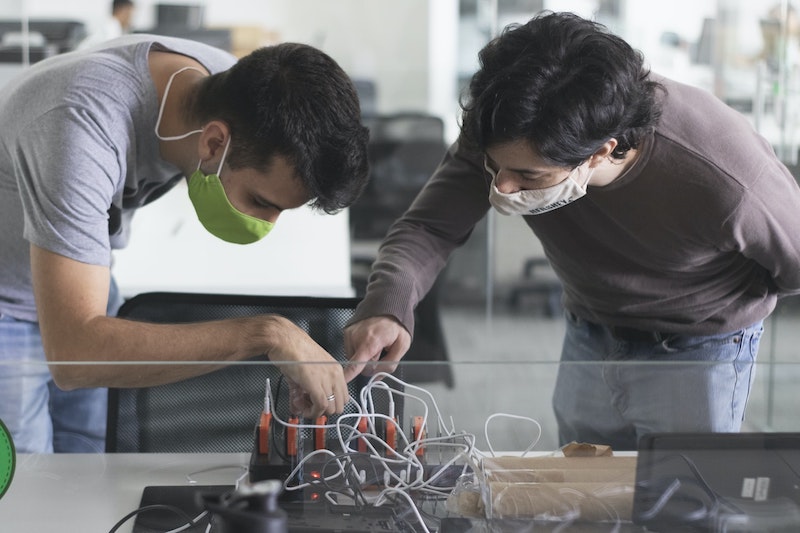
COVID-19 Crisis: Employers Automating Workplaces to Fill in Reduced Workforce
The world has been at a standstill since March 2020 – thanks to the novel coronavirus pandemic and the impending lockdown in many places.
Some of the worst-hit sectors are manufacturing industries, which are facing a labor shortage and thus are not able to operate at 100 percent of their strength.
With lower productivity comes reduced revenue, which could be perilous when the economy is taking a hit.
The short-staffing due to COVID victims staying home, social distancing, and other such reasons has a massive impact on the production line output. As a result, most corporations turn towards automation to keep the pistons firing at the frontline and meet the production needs.
Despite automation being an expensive affair, companies are willing to accrue this one-time expense to avoid bottlenecks in the long run. Here’s a primer article on why companies are automating and whether it’s a step in the right direction?
Why Are Employers Automating Workplaces?
As mentioned before, companies are facing production bottlenecks due to the pandemic and the resulting lockdown/social distancing norms. Employers are considering replacing the missing work staff with robotics and automation to keep the mill running to sustain during the pandemic.
The pandemic has increased the demand for many sectors, including health care and food production. And without good hands on deck, it’s practically impossible to meet the demand. In such cases, companies turn toward automation to fill in the gap in their production needs.
One of the first steps after automating a workplace is to hire a safety company to design a safety program to meet the specific operating requirements of these automation devices. Naturally, the machines will be alien for anyone who has not used them before.
Proper health and safety training will ensure that you do not end up having even more production bottlenecks than the one created by the pandemic.
Is Automation Really About Employee Safety, or is There More to it?
In the past, companies did automation to save on labor costs and increase productivity at the same time. These automation machines are designed to be very precise, and they assure quality as well. Now, the focus is more on supplementing the labor shortage due to COVID-19 and the safety of employees.
Worker safety is one of the important reasons to automate any industrial setup. Simply put, automation systems are designed to remove workers from dangerous tasks, and the whole process safeguards employees against potential safety hazards in the factory environment.
In the United States, The Occupational Safety and Health Act or OSHA was enacted in 1970 by then-president Richard Nixon. The sole objective of the act was to make the work environment safer and ensure the employee’s physical well-being. OSHA has played a crucial role in promoting automation across industries.
How is Automation Beneficial for Companies?
There are several advantages attributed to automation and robotics in a factory. From a company’s point of view, automation increases production yields, improves productivity, reduces wastage of material, and improves safety.
Increased output and higher productivity rates are two critical factors taken into consideration by employers to justify automation. The consistency in product quality and higher yield by automation far outranks the excellent workmanship from a business standpoint.
Worker safety and wellness is another benefit of automation for companies. It allows them to put their workers out of harm’s way and focus on more meaningful and innovative work. Removing the repetitive manual tasks out of the equation, companies save on man-hours, which they can use for more productive work.
With the COVID-19 pandemic bringing the world to its knees, automation is proving to be extremely valuable for employers. With proper automation in place, companies can open the doors to their factories with a limited workforce to maintain social distance while still getting the work done.
The ideal scenario would be to rotate the crew daily or weekly as the company deems fit to retain most of the workforce. In this case, automation is helping workers keep their jobs and earn a livelihood during this dire situation.
There’s a school of thought that believes automation helps draw in and retain a productive workforce. Companies with automated processes to help employees with their day-to-day work have reported increased attendance.
If used wisely, automation and robotics have the potential to change the future for the better. As for the current scenario, many companies have already benefited from automation to avoid production bottlenecks and keep up the supply to meet increased demand due to COVID-19.
